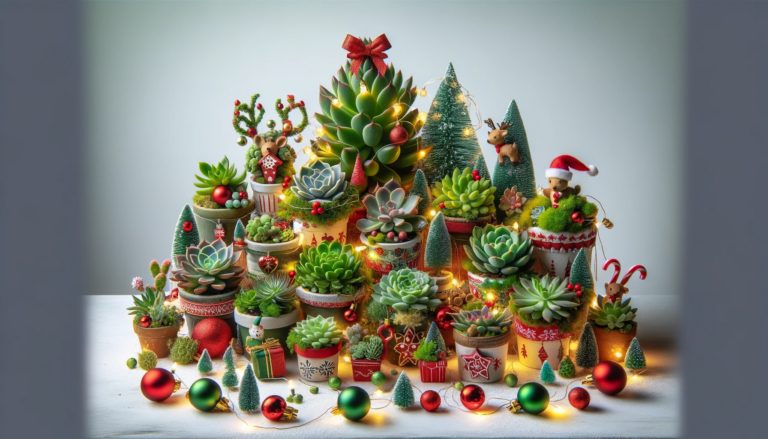Evergreen Shrubs: A Comprehensive Guide for Year-Round Greenery
Evergreen shrubs are an essential component of many landscapes, providing year-round foliage and color to gardens and urban spaces. These low-maintenance plants retain their leaves throughout the year, making them an ideal choice for those seeking a consistently attractive addition to their environment. As a diverse group of plants, evergreen shrubs come in various shapes, sizes, and colors, offering limitless options for gardeners and landscape enthusiasts alike.

The core characteristics of evergreen shrubs include their resilience and ability to thrive in various conditions, making them adaptable to a wide range of climates and soil types. Additionally, their year-round foliage helps to create a sense of privacy and structure in garden designs. Many species also produce attractive flowers or fruits, adding visual interest and attracting essential pollinators to the surrounding ecosystem.
There are several excellent varieties of evergreen shrubs to choose from, catering to diverse aesthetic preferences and practical needs. Some popular choices include boxwood, holly, laurel, and photinia. Each variety has its unique traits and advantages, which should be considered when selecting the perfect evergreen shrub for a particular space.
Key Takeaways
- Evergreen shrubs provide year-round color and structure in garden landscapes.
- Their versatility allows them to thrive in various climates and soil conditions.
- Numerous varieties exist, offering a broad range of options for different tastes and needs.
Core Characteristics of Evergreen Shrubs

Evergreen shrubs are an essential component of many landscapes, providing year-round interest and structure to gardens and natural settings.
In this section, we will explore the core characteristics that distinguish evergreen shrubs from other plant types, focusing on their foliage, adaptability in winter, and their ability to maintain a vibrant appearance throughout the year.
One of the defining features of evergreen shrubs is their ability to retain their foliage all year round. Unlike deciduous plants, which drop their leaves in preparation for winter, evergreen shrubs continuously maintain their leaves.
This allows them to take advantage of photosynthesis throughout the year, resulting in a consistently lush and vibrant appearance. The foliage of evergreen shrubs is often characterized by dark green, leathery leaves, which enable them to efficiently conserve water and resist harsh winter conditions.
During the winter, when deciduous plants lose their leaves, evergreen shrubs play a vital role in maintaining the structural and visual appeal of the landscape. Their resilience in the face of cold temperatures and their ability to capture sunlight throughout the winter months supports both their own growth and the ecosystem as a whole.
Additionally, by providing a stable habitat in the winter months, evergreen shrubs contribute to the well-being of various fauna, including birds and small mammals that seek shelter and protection from the elements.
Evergreen shrubs possess unique characteristics that set them apart from deciduous plants. Their ability to retain dark green foliage throughout the year, combined with their resilience in winter conditions, make them indispensable assets in gardens and ecosystems across a variety of climates.
Ultimately, by understanding and appreciating the core characteristics of evergreen shrubs, we can work to create and maintain landscapes that provide year-round beauty, balance, and ecological integrity.
Best Varieties of Evergreen Shrubs
Commonly Used Evergreen Shrubs
Several evergreen shrub species thrive in a range of climates and display beautiful foliage all year long. These shrubs, such as the Rhododendron, Yew, Box, Azalea, and Juniper, offer excellent options for a variety of landscaping purposes.
Others like the Boxwood, Arborvitae, and Japanese Holly, present versatility with hardy, low-maintenance, and visually appealing characteristics. Camellia and Inkberry, for instance, provide interesting textures, colors, and shapes to complement a garden’s design and layout.
Colorful and Fragrant Evergreen Shrubs
If eye-catching colors and captivating fragrances interest you, we suggest exploring Daphne, Pieris, and Mahonia.
These species boast vibrant flowers that come in purple, white, or bell-shaped forms, adding a delightful sensory experience to your outdoor space. Evergreens such as Gardenia, Oleander, and Mountain Laurel are famous for their captivating fragrance, perfectly suited for garden borders and pathways.
Ideal Decorative Uses for Evergreen Shrubs
Evergreen shrubs are versatile in their usage and make excellent choices for foundation planting, hedges, and borders. Some popular options include Boxwood and Arborvitae for formal and neatly trimmed hedges.
For taller privacy screens, consider using species like Cedar or Thuja Occidentalis. Dwarf evergreen shrubs, like Rhododendrons and Azaleas, are great choices for ground cover or decorative pots, allowing you to add color and texture without overwhelming the space.
Evergreen Shrubs and Endurance
When it comes to hardiness, some evergreen shrubs can tolerate challenging conditions like drought, varied soil types, and cold weather.
A few examples are Oregon Grape, Mirror Bush, Euonymus Fortunei, Juniperus Chinensis, and Cherry Laurel. These resilient shrubs ensure that your garden remains visually appealing and full of life even during harsh weather conditions.
Special Attributes of Evergreen Shrubs
Many evergreen shrubs possess distinct characteristics that set them apart from other plants. Variegated species such as Ilex Crenata and Pieris Japonica display unique patterns and colors on their leaves.
An excellent feature for garden aesthetics involves plants that produce berries, like Blue Holly and Indian Hawthorn, which not only add visual interest but also attract birds and other wildlife.
Owners of Creeping Juniper can quickly transform their landscape by using it as an attractive ground cover, while Kalmia Latifolia is known for its lovely, glossy green leaves that retain their charm all year round.


